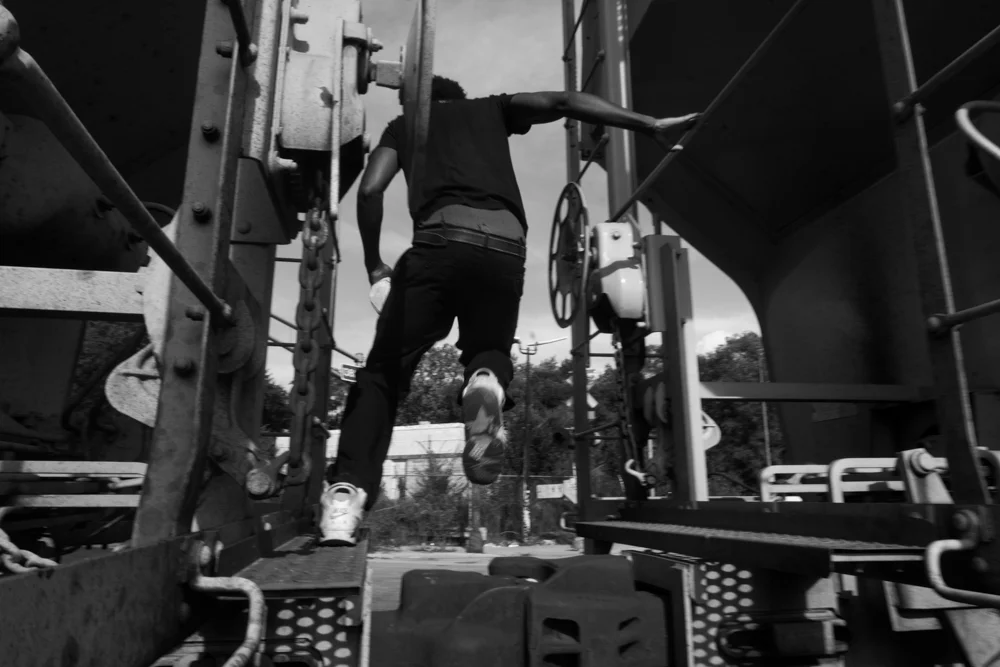Photo Journal Monday: Felipe Jácome
Alejandra Bones has 3 brothers and sisters. She is the only one of her siblings that picks shells to contribute to the family´s income. Cayapas Mataje Reserve, Ecuador. 2014
Written by Agnes Bae
Felipe Jácome is a documentary photographer born in Ecuador who focuses on issues of human mobility and human rights. After completing his studies at John Hopkins University and the London School of Economics, he went on to win the Young Reporter Competition of the International Committee of the Red Cross in 2010.
The Lord of the Mangrove series was photographed in the Cayapas-Mataje Mangrove Reserve in Ecuador. The images shot in black-and-white feature the children and adults called concheros, who effortlessly navigate their ways through the intertwined branches in search of black shells. Among the tallest Mangrove trees in the world inhabit the Cayapas-Mataje Reserve, their enormous presence towering over the shell pickers.
Cesar and Olger goof around on the roots of the mangrove. Cayapas Mataje Reserve. 2013
Many of the afro-ecuadorian families in the community rely on the black shells for their livelihood—the concheros receive about eight cents per shell after finding about 50-100 shells per day. In Jácome’s images the children appear to be no more than ten or twelve years old, scrambling in and around the branches of the Mangroves as if the trees were nature’s own jungle-gym. Some of the children are documented smiling into Jácome’s lens, an indication of the close inter-personal relationship he establishes with his subjects before entering their terrain with his camera. The children hang upside down, goof around with the black shells, and in some instances, do not even acknowledge Jácome’s camera, comfortably displaying their youthful personalities. While their whimsicality emanates through the photographs, the images do not detract from the physically strenuous reality of shell picking where the children face various environmental obstacles.
Jefferson Muñoz blows into a torch made out of coconut husks locally called “mechones”. The torches blow smoke for hours repelling the vicious mosquitoes and black flies that inhabit the mangrove. Cayapas Mataje Reserve. 2014.
A group of kids come back from picking shells before going to school in the afternoon. Cayapas Mataje Reserve. 2014
Efraín Montaño goofs around with the black shells he just picked. He has 5 brothers and sisters, 1 of them also picks shells. Cayapas Mataje Reserve
Even though shells are a culinary delicacy in Ecuador, shell pickers are only paid 8 cents of a dollar per shell. On average, pickers will find 100 shells in a day´s work. San Lorenzo, Ecuador. 2010
A group of children take a break from picking shells. Cayapas Mataje Reserve, Ecuador. 2013
Rosa Quiñones carries her sons Efraín and Isac to school during the monthly high tide that floods the communities of the mangrove for several days in a row. The communities in the Cayapas Mataje Mangrove Reserve have absolutely no sanitation as the tides flood any kind of improved facilities. Tambillo, Ecuador. 2014
Oftentimes images such as Lord of the Mangrove, of under-represented communities are solely exhibited in publications and galleries not readily accessible to those portrayed in the images. A firm believer in returning images back to his subjects, Felipe Jácome displayed his images in the actual reserve for the community’s own viewing. The color snapshots of the children and families who pose around their own images are a compelling juxtaposition of art and the life that it imitates, as the concheros proudly pose next to their black-and-white photographs.
© Felipe Jácome
© Felipe Jácome
© Felipe Jácome
© Felipe Jácome
Felipe Jácome’s work can be found here.



















